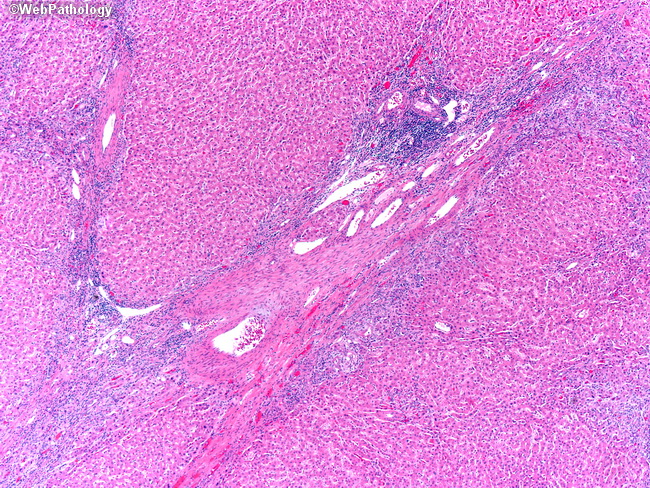Focal Nodular Hyperplasia : Pathogenesis


Comments:
Pathogenesis of Focal Nodular Hyperplasia (FNH): The pathogenesis of FNH is not fully understood. It is not a true neoplasm and is polyclonal. It appears to be a regenerative response to localized vascular injury or altered blood flow in the liver parenchyma. Vascular anomalies may play a role in its formation. FNH-like lesions are seen in association with vascular lesions, such as cavernous hemangioma, epithelioid hemangioendothelioma, and hereditary hemorrhagic telangiectasia. FNH can also develop in patients with hepatic venous outflow obstruction and following orthotopic liver transplantation. In males, it is associated with chronic alcohol abuse. In females, there is no convincing evidence of a relationship with oral contraceptive use (unlike with hepatocellular adenoma). About this image: Nodules of mature hepatocytes are separated by fibrovascular stroma containing lymphocytic infiltrate. Several medium- to large-caliber, thick-walled muscular arteries are also seen. These vessels are not associated with portal veins or bile ducts.



